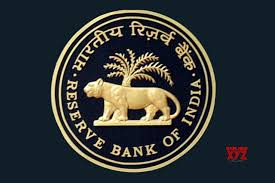Reserve Bank of India issues revised prudential framework for resolution of stressed assets
By INSOL India Editorial Team Posted On : July 15, 2019

RBI by its circular on a Revised Framework for Resolution of Stressed Assets dated February 12, 2018 (“February 12 Circular”) had established a more stringent regime for debt resolution in a timebound manner. The lenders were required to restructure the account and implement a resolution plan within the specified timeline of 180 days. If such accounts were not restructured as per the terms of the guidelines within a period of 180 days, then the banks were required to mandatorily refer the account to CIRP under the Code within 15 days.
The applicability of the February 12 Circular was a matter of intense litigation, especially by the power industry. In April 2019, the Supreme Court of India in Dharani Sugars and Chemicals Limited vs. Union of India abolished the February 12 Circular on the grounds that the RBI did not have the powers to issue such a circular.
Subsequently, the RBI has issued a new circular on June 7, 2019 under which it has prescribed a revised framework for resolution of stressed assets (“RBI Resolution Framework”). The RBI Resolution Framework provides an out of court negotiated debt resolution regime to be implemented in a timebound manner. While the earlier framework under the February 12 Circular was applicable only to the banks and certain select financial institutions, the applicability of the RBI Resolution Framework has now also been extended to small finance banks and to certain categories of non-banking financial companies.
The RBI Resolution Framework requires the lenders to identify incipient stress in loan accounts and take prompt corrective action in case of a default. Lenders are required to review the borrower’s account within a period of 30 days (“Review Period”) from the date of default and during the Review Period the lenders can decide on, amongst other things, the resolution strategy, nature of resolution plan, approach for implementation of the resolution plan. They may also choose to initiate legal proceedings for insolvency or recovery. The lenders are required to enter into an inter creditor agreement during the Review Period for providing the ground rules for finalisation and implementation of resolution plan. A decision taken by lenders representing 75% by value of total outstanding debt and 60% by number will be binding on all lenders. Further, the RBI Resolution Framework stipulates that a resolution plan should provide payment of at least the liquidation value to the dissenting creditors.
Once the Review Period is over, a resolution plan has to be implemented within 180 days. A resolution plan can envisage any action or plan for payment of all overdue amounts including but not limited to sale of exposures to other entities/investors, change in ownership and restructuring/revision of existing terms of the debt. A resolution plan will be considered to be implemented:
(a) when there is no change in ownership of the borrower, if the borrower is not in default with any of the lenders as on the 180th day of the Review Period; or
(b) where is there change in ownership or change in terms of existing debt, if the following conditions are met:
(i) Execution of all necessary documents including security documents;
(ii) The new capital structure and change in terms of existing debt is reflected in books of all lenders; and
(iii) Borrower is not in default with any lender; or
(c) in case of a transfer of exposure by the lenders or recovery action, when a lender’s exposure to the borrower is fully extinguished.
If the resolution plan is not implemented within 180 days from the end of Review Period or 365 days from the commencement of Review Period, 20% and 35% of additional provisions are to be made by all the lenders, respectively. These additional provisions are over and above the provisions already held or the provisions required to be made as per the asset classification status of the borrower account. This is in contrast with the earlier prudential framework, which mandatorily required the lenders to initiate proceedings under the Code if a resolution plan was not implemented by the end of 180-day period.
The RBI Resolution Framework provides conditions which have to be met for reversal of the additional provisions. One such condition is that if the lenders choose to file for initiation of CIRP for resolution under the Code, then half of the additional provisions may be reversed on filing of insolvency application and the remaining additional provisions may be reversed upon admission of the borrower into insolvency resolution process under Code.
